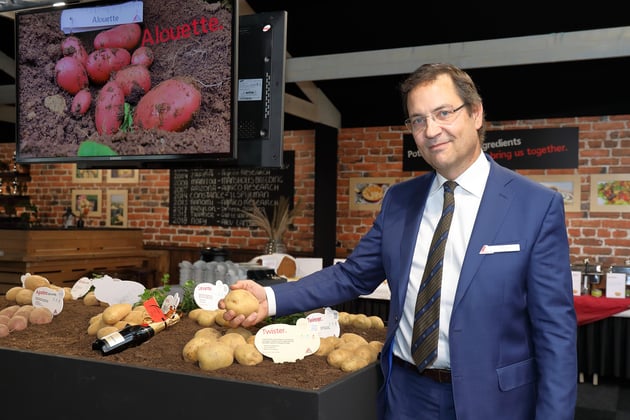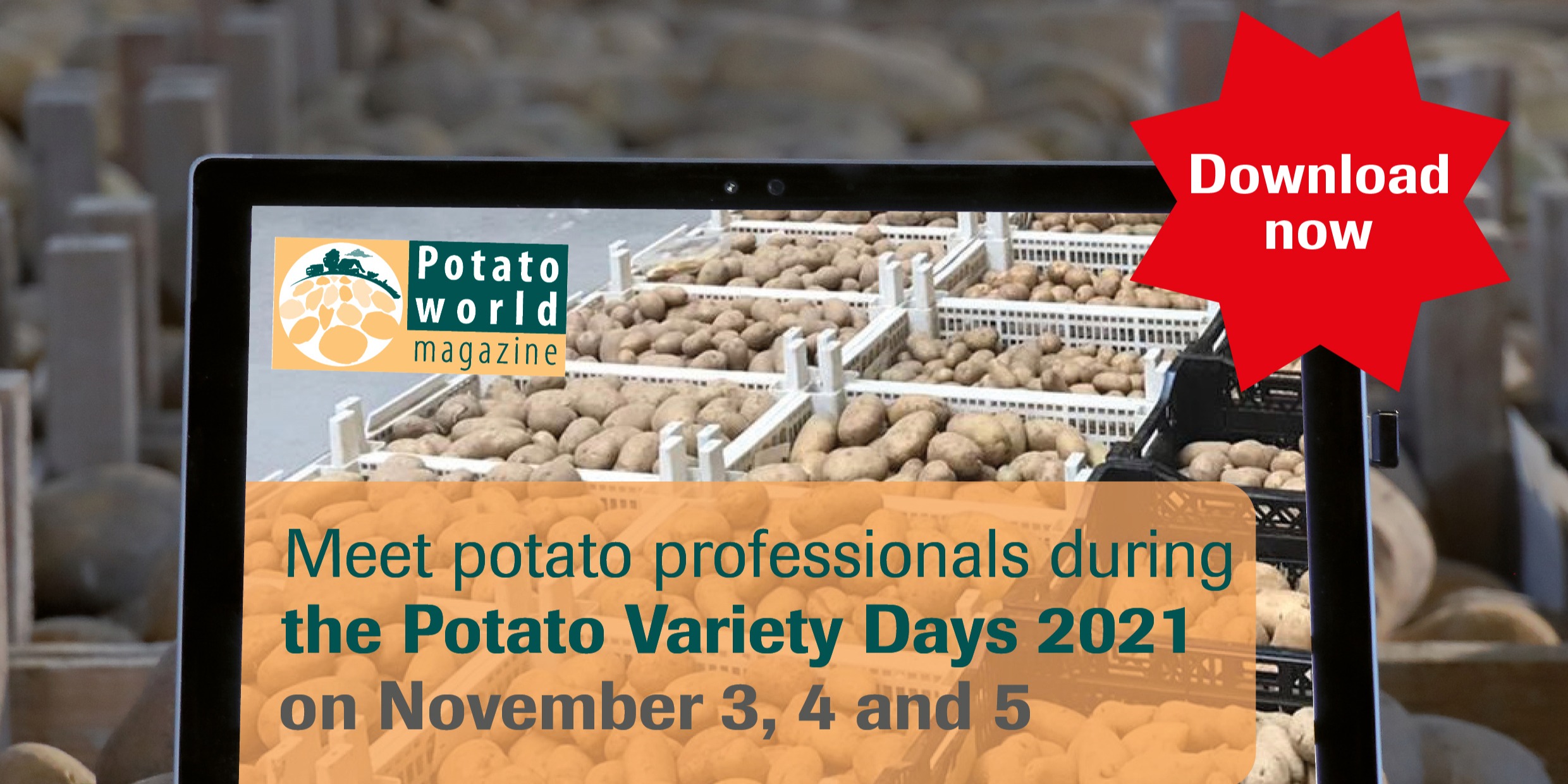The content of this blog originates from the article on the Potato Variety Days 2021 published in PotatoWorld magazine 2022/01.
By Zindziwe Janse, Jaap Delleman and Leo Hanse.
During the Potato Variety Days 2021, we asked participating breeding companies about the key focus of their breeders in their search for new varieties. In this blog post you may read the answer given by Sjefke Allefs, Director of Agrico Research, Bant (NL):
‘Despite collecting a lot of data, we are regularly surprised’

‘The big challenge in the breeding work is to determine what the market wants. To find this out, we collect data about the developments in the market, which we then translate into strategies within our fifteen market segments’, is the breeders’ vision of Sjefke Allefs, Director of Agrico Research. ‘Nevertheless, we’re often surprised, as was shown by our organic Twister variety that’s doing unexpectedly well in the ware potato market in Southern Europe.’
‘At the moment, we are hardly achieving any improvement in the dry matter yield. You can achieve a higher yield per hectare, but that’s through extra water intake. I maintain that the dry matter in the Bintje variety is the maximum attainable in its ripening class. You can get higher yields with this, but then you have to let the crop grow for longer. You can see this, for example, with sugar beet. These are still green as grass in November and keep on growing. If potato yields can’t be increased any further, this means that we’ll have to derive the added value of new varieties from other characteristics. Think of higher processing efficiency, better quality French fries, fewer small fries in the French-fry varieties, fewer oversize potatoes, improved storability, resistances and so on’, Allefs explains. ‘For a proper interpretation of the variety development for the various markets, we distinguish fifteen different segments. In order to determine the right direction within the segments, we discuss the required breeding objectives once a year. This brings together, among others, the product and export managers, and our eight breeders. With the breeding team, we’ll then decide which market segments will receive how much attention in the cross-breeding programme and therefore also the sowing programme. That’s where we decide the direction we’re going to take. With this, we interpret the requirements of all the chain players. Because if one of the chain players isn’t too happy with a variety, then it's a no-go. The chain players are seed potato and ware potato growers, processors or packagers, supermarkets and, finally, the consumer. When the supermarket finds that a potato is turning green or is sprouting too quickly on the shelf, then that variety is rejected, even if the other players may be happy with it. Another example is how we deal with the varieties for export. These need to be fewer in number because they have to grow big. This is what customers in North Africa experience as the Rolls-Royce among the potato. But the seed potato growers don’t know how to deal with that, because what they want is high numbers. It’s not so easy to set multiple goals at the same time. Success depends on many, often subtle, things that often take us by surprise. Take the Twister variety, for example, which we’ve placed in the spotlight this year. Organic breeder Wim te Winkel selected this variety for the organic market under organic conditions. Because all our varieties are tested in the international trial fields, the variety is given the opportunity to show what it is worth. So we see that our customers in the south of Europe primarily see the variety as a replacement for the Agata, supplemented with broad Phytophthora resistance. This wasn’t foreseen, as it was selected entirely for the organic market. What plays a part is that the variety presents well, washes well and can be stored well. An additional advantage is that the variety has been selected under poor conditions, allowing it to quickly meet current environmental requirements for growing with the least possible nitrogen.’
’Want to keep reading about the Potato Variety Days?
In the run-up to the event we published an e-book that you can download here!


